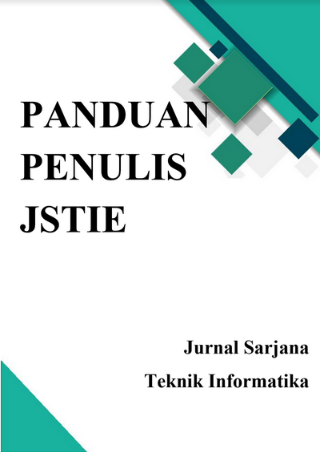Penerapan Metode TOPSIS dalam Sistem Pendukung Keputusan Pemilihan Bahan Baku Terbaik untuk Pembuatan Spring Bed (Studi Kasus : Bigland ByPass Padang)
DOI:
https://doi.org/10.12928/jstie.v11i1.25792Keywords:
Sistem Pendukung Keputusan, TOPSIS, Pemilihan Kualitas Terbaik, Spring Bed, PHP, MySQLAbstract
PT. Cahaya Murni Andalas Permai merupakan salah satu perusahaan yang bergerak di bidang industri mebel yang memproduksi beberapa kebutuhan rumah tangga serta peralatan kantor, salah satunya yaitu tempat tidur atau yang biasa dikenal dengan sebutan spring bed. Sistem pendukung keputusan dirancang bertujuan untuk mendukung seluruh tahap pengambilan keputusan mulai dari mengidentifikasi sebuah masalah, memilih data-data yang relevan dan menentukan pendekatan yang digunakan pada sebuah proses pengambilan keputusan. Penelitian ini mengembangkan sistem pendukung keputusan dengan menggunakan metode TOPSIS untuk memudahkan karyawan dalam penentuan kualitas springbed perhitungan kualitas springbed yang tersimpan rapi didalam sebuah database. Sistem dibangun menggunakan Bahasa pemrograman PHP dan Database MySQL. Tujuan yang ingin dicapai dari penelitian ini untuk menentukan kualitas spring bed terbaik dengan kriteria yang digunakan yaitu: pegas, daya topang, bahan pelapis, dan jenis kayu yang dijadikan bahan perhitungan. Penentuan kualitas pada sistem dibuat dengan data-data yang sudah tersimpan, serta ketetapan pada setiap setiap nilai kriteria yang digunakan untuk penilaian kualitas.References
Surya. (2018). Penilaian Kinerja Dosen Menggunakan Metode TOPSIS (Studi Kasus : AMIK Mitra Gama). 2 (1), 322-329 http://jurnal.iaii.or.id
Prehanto. (2020), Buku ajar konsep sistem informasi. Surabaya : Seopindo Media Pustaka
Sihotang. (2019). Sistem Informasi Pengagendaan Surat Berbasis Web Pada Pengadilan Tinggi Medan. 3(1), 6–9. https://doi.org/10.31227/osf.io/bhj5q
Jainuri. (2021). Analisa dan Perncangan Sistem Pengambilan Keputusan Pengelolaan Kontrak Kerja Menggunakan Metode Simple Additive Weighting (SAW) : PT. Cipta Teknindo Pramudira
Sari & Rasimin. (2021). Sistem Pendukung Keputusan Pemilihan Kategori Skripsi Bagi Mahasiswa Sistem Informasi. Jurnal Sistem Komputer Dan Informatika (JSON), 2(3), 339. https://doi.org/10.30865/json.v2i3.3035
Afitiana. (2019). Sistem Seleksi Peserta Didik Untuk Kelas Unggulan Dengan Metode Topsis (Studi Kasus Di Smp Negeri 39 Semarang) (Doctoral dissertation, UNNES)
Prihandoyo. (2018). Unified Modeling Language (UML) Model Untuk Pengembangan Sistem Informasi Akademik Berbasis Web. Jurnal Informatika: Jurnal Pengembangan IT, 3(1), 126-129
Destriana, R., Husain, S. M., Handayani, N., & Siswanto, A. T. P. (2021). Diagram UML Dalam Membuat Aplikasi Android Firebase . Deepublish.
A. S., dan Shalahuddin. (2018). Rekayasa Perangkat Lunak Terstruktur dan Berorientasi Objek. Bandung: Informatika
Wahyuni. (2020). Pest Detection Expert System And Method Using Bayes Rice Diseases. Journal Of Computer Networks, Architecture and High-Performance Computing, 2(2), 313–319
Downloads
Published
Issue
Section
License
License and Copyright Agreement
In submitting the manuscript to the journal, the authors certify that:
- They are authorized by their co-authors to enter into these arrangements.
- The work described has not been formally published before, except in the form of an abstract or as part of a published lecture, review, thesis, or overlay journal. Please also carefully read Journal Posting Your Article Policy.
- The work is not under consideration for publication elsewhere.
- The work has been approved by all the author(s) and by the responsible authorities – tacitly or explicitly – of the institutes where the work has been carried out.
- They secure the right to reproduce any material that has already been published or copyrighted elsewhere.
- They agree to the following license and copyright agreement.
Copyright
Authors who publish with Jurnal Sarjana Teknik Informatika agree to the following terms:
- Authors retain copyright and grant the journal right of first publication with the work simultaneously licensed under a Creative Commons Attribution License (CC BY-SA 4.0) that allows others to share the work with an acknowledgement of the work's authorship and initial publication in this journal.
- Authors are able to enter into separate, additional contractual arrangements for the non-exclusive distribution of the journal's published version of the work (e.g., post it to an institutional repository or publish it in a book), with an acknowledgement of its initial publication in this journal.
- Authors are permitted and encouraged to post their work online (e.g., in institutional repositories or on their website) prior to and during the submission process, as it can lead to productive exchanges, as well as earlier and greater citation of published work.








